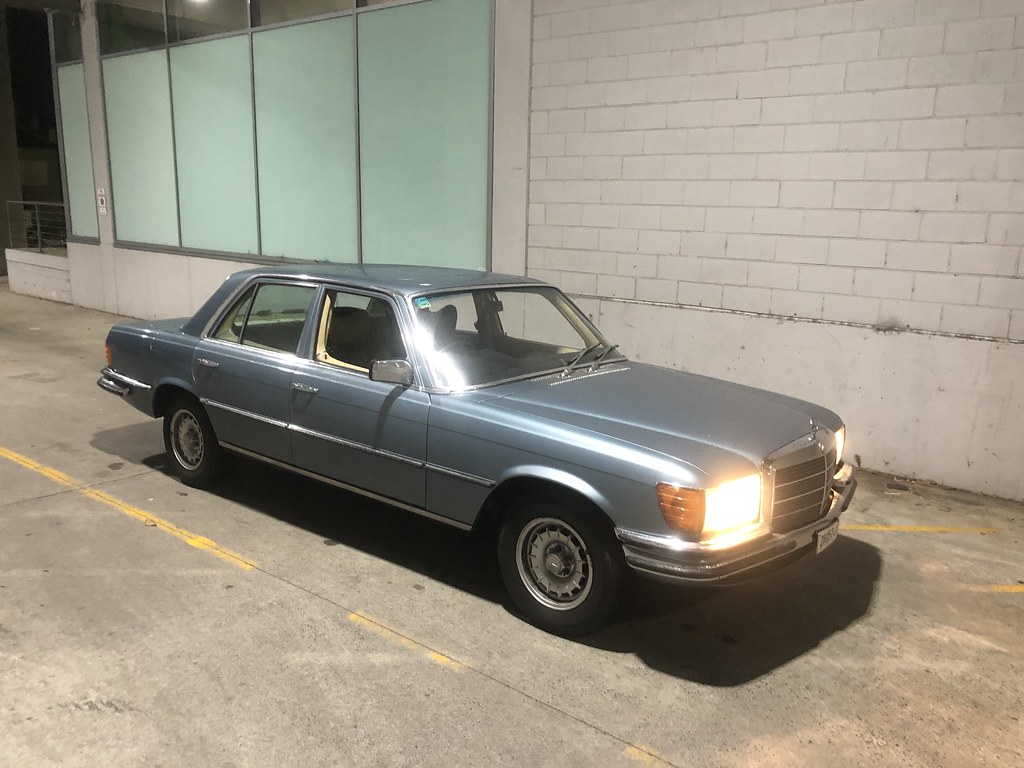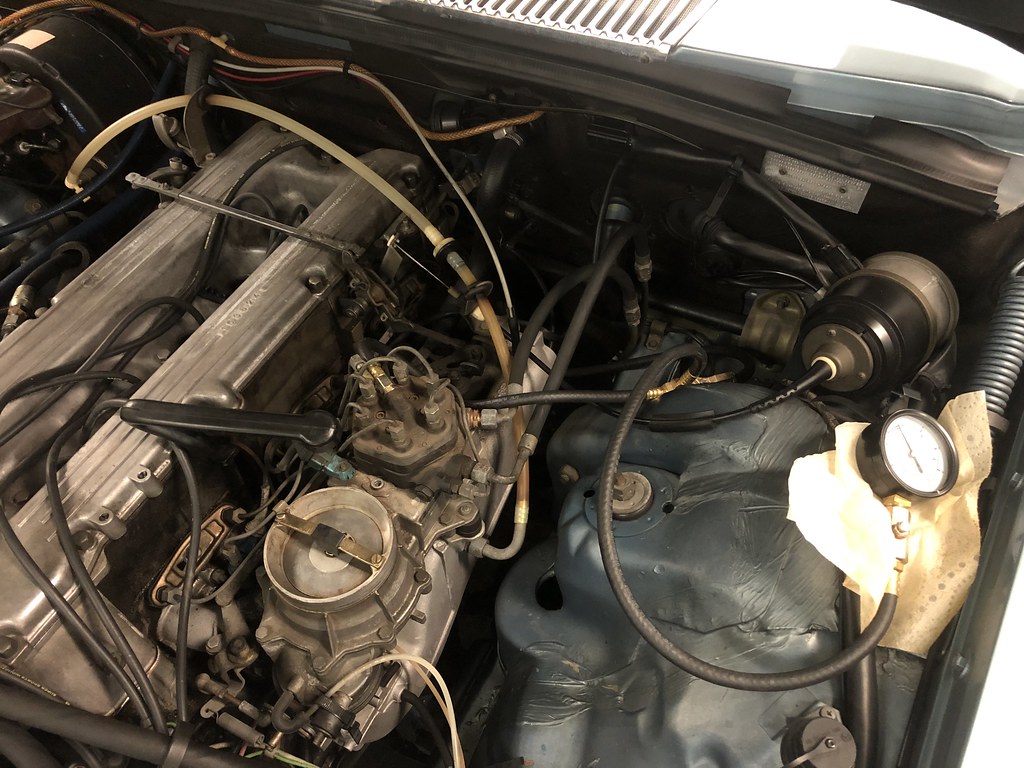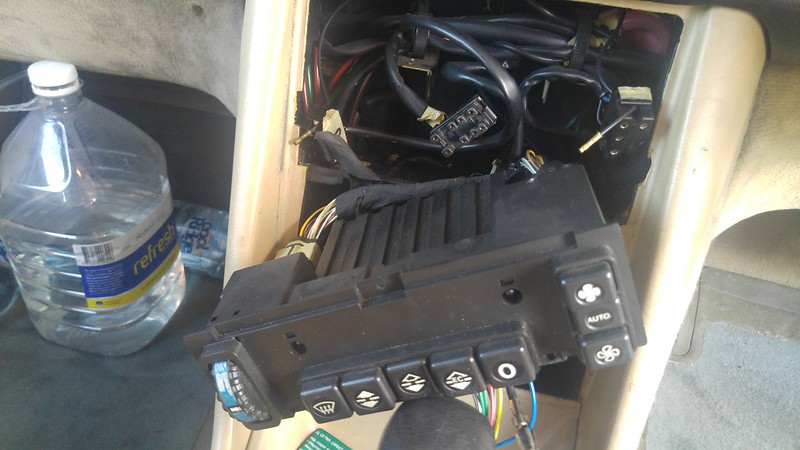I’ve been trying to narrow down poor running on my 79 280SE when cold. Previously, I had two issues I was trying to narrow down, high control pressure when cold, and after a while both system and control pressure dropping and fluctuating. I had replaced the fuel pump, which made no difference to the fluctuation issue. I had also sent off my warm up regulator to be cleaned.
When my warm up regulator returned, I refitted it to the car. Even without running the engine, the control pressure was much better. Actually it was now too low. I still had the fluctuation though. That got me thinking that while the fuel tank was clean, filter clean, pump ok and so on, I had not ruled out the small opening in the bottom of the swirl pot being clogged. A quick test could rule that out. Adding another 25 liters of fuel would bring the level above the swirl pot.
Adding that extra fuel immediately fixed the pressure going lower and the noise from the fuel pump. It was pretty obvious that this part of my issue was caused by the small hole in the bottom of the swirl pot being clogged. This is a common problem in this era of Mercedes-Benz when they have sat for a while not being used.
I don’t have a non-copyright photo of the swirl pot to illustrate. However, the function of the swirl pot is to prevent fuel starvation when the tank is below 25% and the car is being driven up or down a hill, or hard cornering. Without the swirl pot, the fuel would slosh around in the bottom of the tank and the intake would suck in air. Other cars use various baffles or a sump to achieve the same result.
The swirl pot looks like a little plastic flower pot in the bottom of the tank. The fuel strainer sticks up into the centre of the pot. When the tank is above about 25-35% capacity, the swirl pot is always full because fuel enters from the top. Once the tank starts to empty, the return line is angled so that it causes the fuel to swirl around the edges of the pot and suck in petrol from a small hole via a venturi effect. This keeps the pot full, even with a comparatively empty tank. I had this exact problem on my old 250SE coupe. I ended up dropping the tank and cleaning the hole via long pipe cleaners. The shape of the W111 tank makes it easier to see the swirl pot via the holes for the sender and strainer.
Right now I am going to ‘solve’ this problem by keeping the tank above 30%. I may come back and look at this once everything else is sorted out. To fix the issue properly I would need to remove the tank.
Running a static test (engine not running), my control pressure was 0.5 bar. According to the manual, it should be 1.0 to 1.4 at 15c. Starting the engine had it up to 1.0 bar, just in spec. Plugging the WUR back into the electrical system, control pressure climbed to 3.8 bar. This was at the high end of spec when warm. Pulling the vacuum line also no longer stalled the engine.
At that point I wasn’t able to take a test drive of the car, as the 280SE was behind two other cars. Today I went back and moved those other cars out of the way and took the 280SE for a test drive. It was much better. I wasn’t getting bad hesitation, at one point I got some very minor hesitation, but overall the car drove quite well. This had me feeling confident enough to remove the gauge set and re-install the air cleaner – which I will do on a cold engine. It feels like I am starting to get somewhere with this car. Assuming its running well. my next step is to sort out the steering coupling and muffler. There is a 116 event coming up I would like to take the car if possible.








[…] K-Jet fuel pressure test part 4 […]
[…] K-Jet fuel pressure test part 4 […]